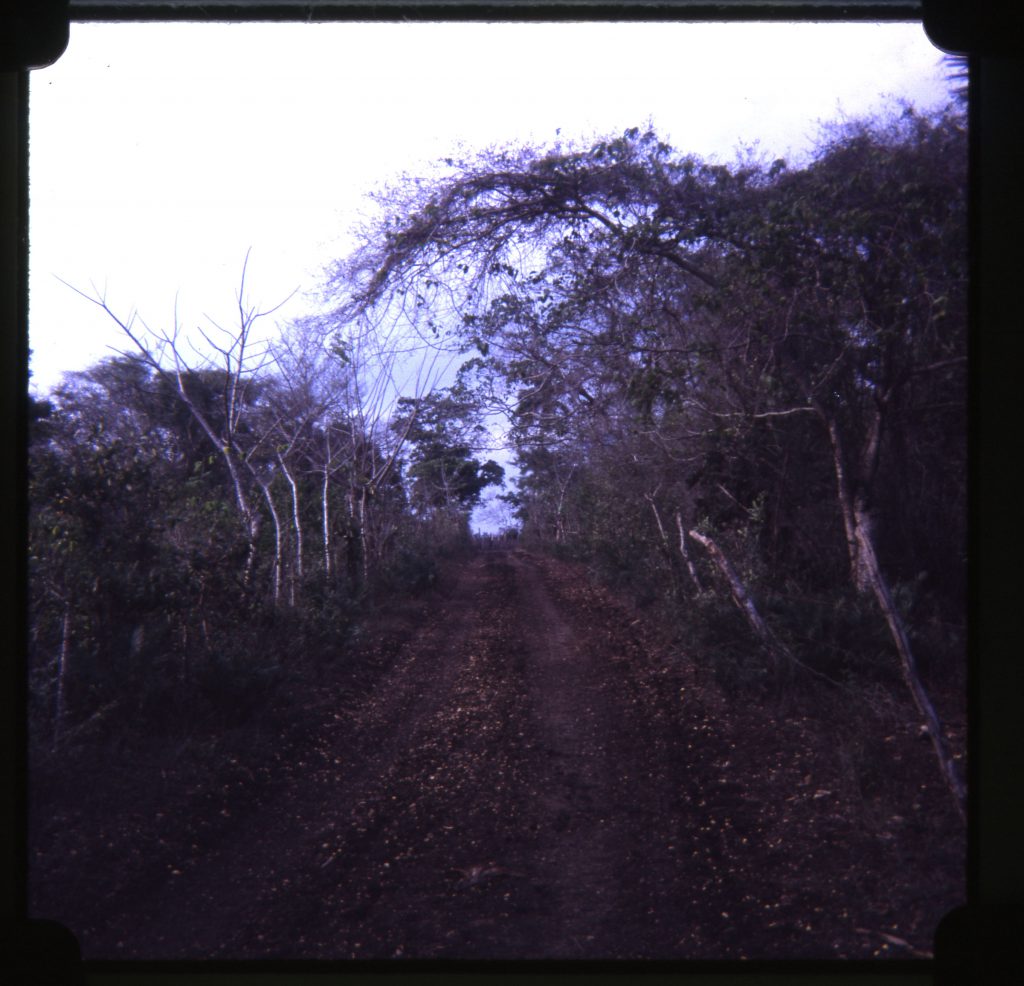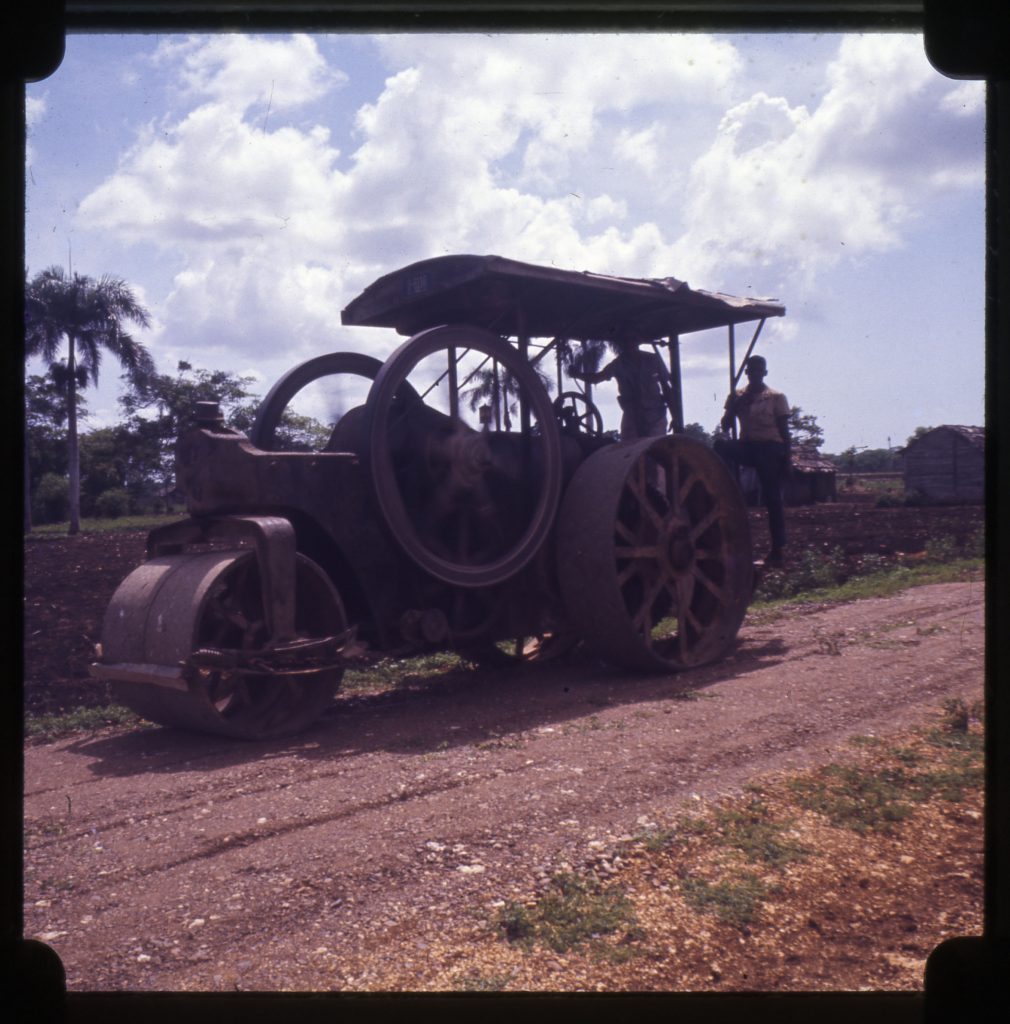Kim Herman served as a Peace Corps Volunteer working in Community Development in the Dominican Republic from 1967 to 1969. A large part of his work in the Dominican Republic consisted of building schools, roads, and other projects for many of the communities he encountered. Herman saved documents, project reports, and slides from his work, which helps us look back on what role PCVs had in the communities they served.
Herman assisted a small community named Cano Prieto in Boca de Yuma, Dominican Republic. In 1968, the community was about 2 1/2 kilometers outside of Yuma, with a total of 35 families. Many of the families relied on farming as their source of income, with cane sugar becoming more and more important. Herman created project reports for his work in the community. These reports, paired with his slide collection, offer valuable information about his work in the Peace Corps. The “Cano Prieto One Room Block School” and the “Los Naranjos Road Project” are two examples of his work projects.
Herman created the Cano Prieto school through the help of locals, after gathering supplies from local businesses. “We began the construction and organized the community according to work days corresponding to the separate members of the committee,” writes Herman, “Each committee member was responsible for a section of the community and also for his day of work on the project. He was to find workers for the project from his section of the community and have them at the work site on the day appointed to him by the committee.” The school was inaugurated on September 28th, 1969. The members of the community, the mayor and city council of Yuma, and other locals welcomed the new school into the community with a short ceremony with the passing of the keys.
Following the Cano Prieto school project, Herman saw community value in a road development project for the Los Naranjos road. Since the community relied on farming, a road to transport their product was essential. The road passes through 3 barrios, or neighborhoods, which would help a large number of communities, but also created difficulties for Herman because he was dealing with multiple groups. The project required cooperation from local land owners to widen the road onto their land. While Herman encountered difficulties to persuade land owners to part with their land, he ultimately found compromises.
After many issues with the construction, Herman was able to successfully complete the Los Naranjos road project following months of work. He also used a lot of the skills and knowledge gained from the Los Naranjos road project for future projects. The road helped open up communities that otherwise were difficult or impossible to enter during the rainy months.
Through his various projects, Kim Herman was able to learn how to work with the communities he hoped to help and in the end created viable resources for many generations to come.
For more information, please visit the Peace Corps Community Archive website. To use the collections or make a donation, please contact the AU Archives at archives [at] american.edu.





